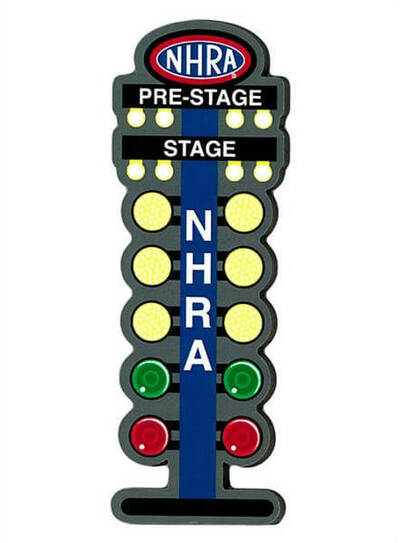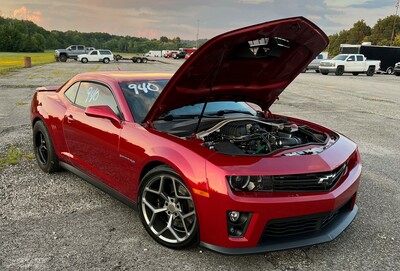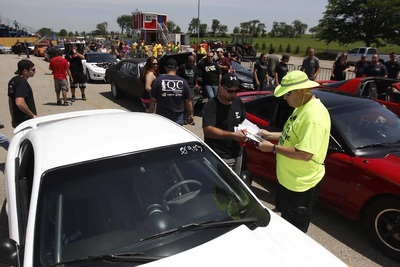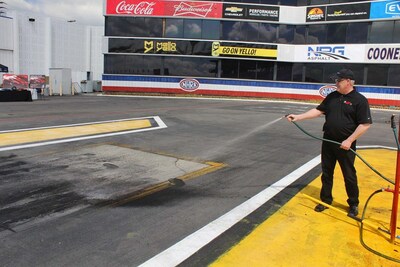Drag Racing 101 with Bertha
By AJ Huffines
Master Certified ASE
Technical Editor
THE AUTO CHANNEL
AUTO CENTRAL - August 17, 2022: I took my car, "Bertha", to the local drag strip to do a few shake downs before the upcoming LS Fest event in Bowling Green, KY. Before I go into details, I thought I would go over basic drag racing info and lingo so you can understand what’s going on.
Drag strip “race track”, the place to see how fast your car can go from a dead stop to pre-determined distance. The track could be 1/8th mile or ¼ mile, our local track is only 1/8th mile. When you arrive you first have to go through tech. Tech is basically where your car is checked over to make sure its safe, and not leaking anything that would result in a hazard on the track. They also make sure you have your safety equipment, if needed, for your vehicle per NHRA rules. You’ll also be assigned a number which is wrote on your car. It helps to easily identify you for track officials.
After you get the green light, you’ll proceed to the staging lanes. The staging lanes are where all the cars line up to get ready to run. Once everything is prepped and ready to go they will call your staging lanes up to the line. This is where you suit up and head up to begin your journey.
You’ll pull around and the first thing you’ll see is the water “burnout” box. This is a small area that has been sprayed down with water. Helps reduce friction when you initiate a burnout. A burnout isn’t just some smoke show, it actually has purpose. It will clean any debris on your tire and also heat the rubber up for maximum traction.
When your smoke show is completed your creep up to the infamous Christmas Tree. No not the one Santa Clause leaves present under, but the tree that stages and initiates the race. You’ll first enter the pre-stage beam. When your front wheel crosses the infrared beam it will trigger the Christmas tree’s pre staged light, alerting drivers that they’re closing in on “staging”. Just 6 inches past that infrared beam is another one that is the staged beam “starting line”. It controls that starting and timing of the race. The race cannot start until both drivers are staged. This staged beam will also trigger a red light if a false start takes place. Now the exciting part. Once both drivers are staged the tree will start its sequence. Three amber lights will flash consecutively for five-tenths of a second apart, with a green light five-tenths later. Green means go, and the race is on. Along your path are speed traps and elapsed time clock beams. There are five intervals along the track where time and speed are recorded. They include: 60-foot, 330-foot, 1/8th mile, 1000 ft, and ¼ mile. At the end of the track located 66 feet before the finish line measures top speed, and then into the final beam. The final beam shuts off the elapsed time and top speed clocks, triggering the win light.
 |
Now onto how my car performed that night. The track wasn’t very packed that night, so I had plenty of time to get my runs in. I made 3 passes that night, allowing the car to cool down between runs.
Run 1: This one didn’t go so well. During my check in process I totally forgot to lower the tire pressure in my rear tires, resulting in lots of wheel spin. I also red lighted trying to bring RPM up on car and my brakes didn’t hold it back.
- Reaction: -.3133
- 60 ft: 2.1811
- 330 ft: 5.5415
- 1/8 ET: 8.0424
- 1/8 MPH: 99.90
Run 2: After realizing my first mistake I lowered my rear pressure to 25. I pulled up to the lights and staged my car. It was slightly improved with the lower tire psi and resulting in a 7.2 at 101 mph.
- Reaction: .2148
- 60 ft: 1.8396
- 330 ft: 4.8526
- 1/8 ET: 7.2908
- 1/8 MPH: 101.61
Run 3: My third and final run of the night. I once again lowered my rear tire psi down to 20. After learning from my previous mistakes I was certain to make a good pass in the car. The car launched pretty well with minimum wheel spin. I could tell the car was much faster and my results confirmed that feeling. I passed through the final beams at 7.0 at 101 mph, and due to NHRA safety rules I was unable to run anymore due to my car not having a roll cage. I took that as a compliment.
- Reaction: .0786
- 60 ft: 1.6969
- 330 ft: 4.6599
- 1/8 ET: 7.0881
- 1/8 MPH: 101.64
Overall, it was a decent night. I got plenty of data log info which was my main reason for going. I looked over it and everything looked good to me. I also found areas in which my car could improve, one being a roll cage. Cooler air would have helped a lot, but my car really needs a higher stall torque converter. I’m currently running my stock converter, and with my bigger cam, the car is not to happy. A higher RPM stall would result in my car not trying to push through brakes, and the car launching at a higher RPM where more power is made. I’ve already placed my order for the converter, so stay tuned for the results once its installed.





